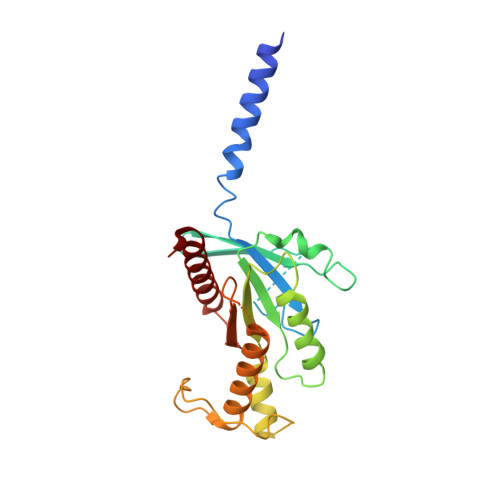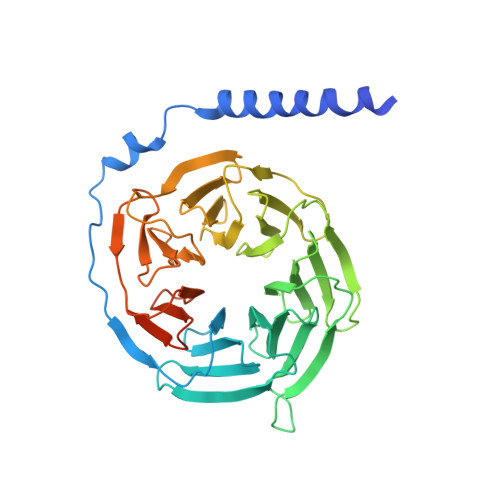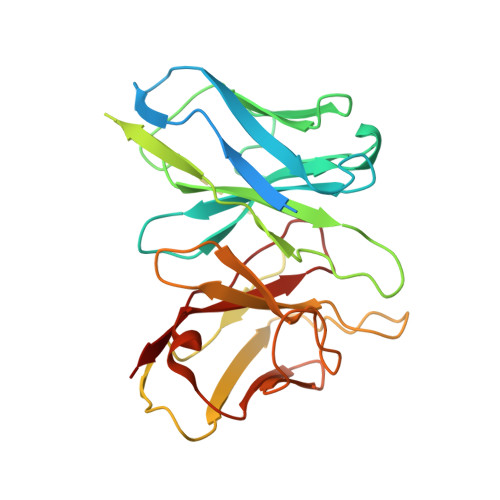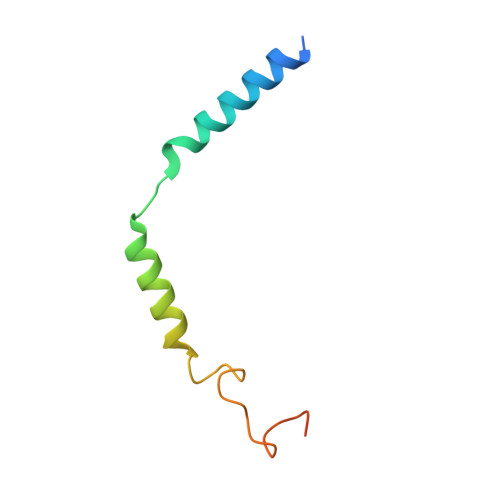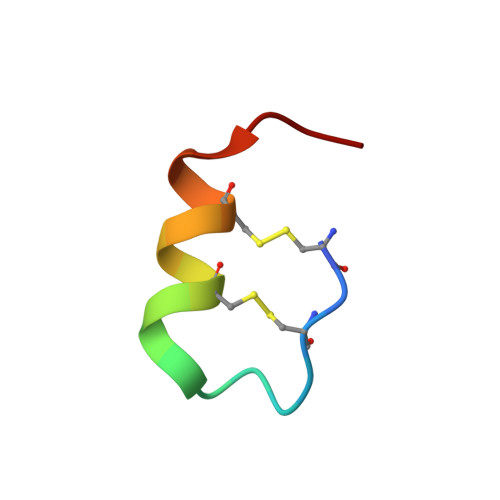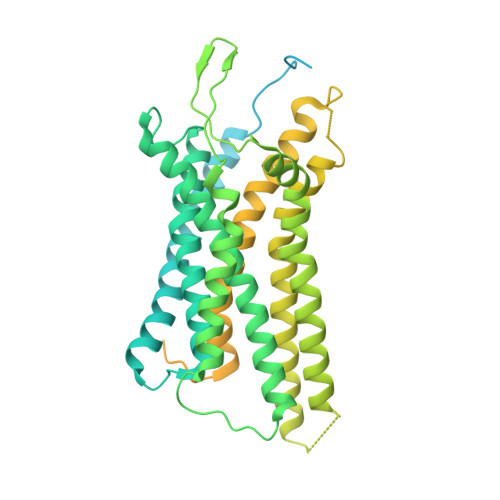Structural basis of peptide recognition and activation of endothelin receptors.
Ji, Y., Duan, J., Yuan, Q., He, X., Yang, G., Zhu, S., Wu, K., Hu, W., Gao, T., Cheng, X., Jiang, H., Eric Xu, H., Jiang, Y.(2023) Nat Commun 14: 1268-1268
- PubMed: 36882417
- DOI: https://doi.org/10.1038/s41467-023-36998-9
- Primary Citation of Related Structures:
8HBD, 8HCQ, 8HCX - PubMed Abstract:
Endothelin system comprises three endogenous 21-amino-acid peptide ligands endothelin-1, -2, and -3 (ET-1/2/3), and two G protein-coupled receptor (GPCR) subtypes-endothelin receptor A (ET A R) and B (ET B R). Since ET-1, the first endothelin, was identified in 1988 as one of the most potent endothelial cell-derived vasoconstrictor peptides with long-lasting actions, the endothelin system has attracted extensive attention due to its critical role in vasoregulation and close relevance in cardiovascular-related diseases. Here we present three cryo-electron microscopy structures of ET A R and ET B R bound to ET-1 and ET B R bound to the selective peptide IRL1620. These structures reveal a highly conserved recognition mode of ET-1 and characterize the ligand selectivity by ETRs. They also present several conformation features of the active ETRs, thus revealing a specific activation mechanism. Together, these findings deepen our understanding of endothelin system regulation and offer an opportunity to design selective drugs targeting specific ETR subtypes.
Organizational Affiliation:
State Key Laboratory of Drug Research, Shanghai Institute of Materia Medica, Chinese Academy of Sciences, Shanghai, 201203, China.








